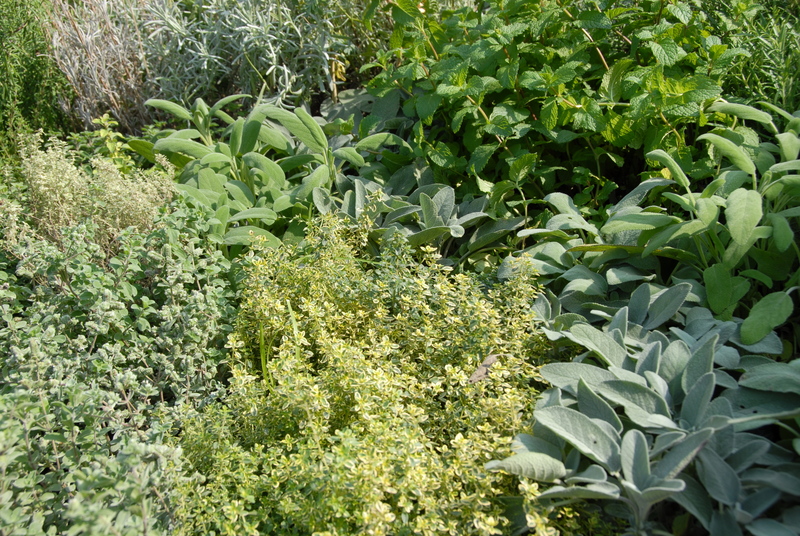Smart Strategies for Protecting Garden Plants in Winter
Posted on 26/05/2025
Smart Strategies for Protecting Garden Plants in Winter
Winter can be a challenging season for gardeners. Cold temperatures, frost, icy winds, and heavy snowfall pose threats to even the hardiest of plants. However, with clever winter garden plant protection strategies, you can ensure your beloved greenery survives and even thrives during the coldest months. In this comprehensive guide, we'll explore smart methods for safeguarding your garden in winter, ensuring longevity and vitality in your landscape.

Why Winter Protection for Garden Plants Matters
Many garden enthusiasts underestimate the impact of winter on their flora. While some plants are biologically adapted to go dormant and withstand low temperatures, others need a little help to survive. Freezing conditions can cause cells to burst, winds can dry out foliage, and frequent thaws followed by freezes can heave roots out of the soil. By employing strategic winter plant protection, gardeners can save time, money, and heartache come spring.
Understanding Your Local Winter Climate
Before you dive into winterizing your garden, it's crucial to understand your local climate. Ask yourself:
- What are your region's typical lowest winter temperatures?
- Is heavy snowfall common, or are winds and frost a bigger concern?
- Does your area experience freeze-thaw cycles?
Use USDA Hardiness Zone information and observe microclimates in your yard to better plan your approaches for winter garden plant protection.
Essential Winter Plant Protection Strategies
1. Mulching: Nature's Insulator
Applying mulch is one of the smartest and simplest ways to protect your garden plants in winter. Mulch acts as a natural insulator, helping moderate soil temperature and reduce moisture loss. Here's how to use it effectively:
- Apply a 2-4 inch layer of organic mulch such as straw, shredded leaves, pine needles, or bark chips
- Extend the mulch several inches beyond the plant's root zone
- Avoid piling mulch directly against plant stems or trunks to prevent rot
- For perennial beds, wait until the first frost to mulch so rodents don't nest beneath
Bonus tip: For sensitive plants, try double mulching, using a layer of compost or soil under your mulch for extra warmth.
2. Protecting Plants from Frost and Freeze
Frost can cause significant damage, particularly to tender plants. Frost blankets, garden fleece, or even old bed sheets can shield plants from overnight chills. Consider following these steps:
- Cover plants in the late afternoon and remove the cover in the morning
- Ensure covers reach all the way to the ground to trap radiant heat
- Use stakes to support covers so they don't touch the foliage directly
For extra cold snaps, use several layers of material or create a framework using hoops for maximum coverage.
3. Installing Windbreaks
Winter winds can dehydrate plants and break branches. Temporary windbreaks like burlap screens or wooden fences provide critical shelter for garden plant protection in winter. Here's how:
- Hammer stakes into the ground around the perimeter of your most vulnerable plants
- Stretch burlap, canvas, or heavy-duty plastic between stakes
- Position windbreaks perpendicular to prevailing winds
For permanent protection, consider planting hedges or evergreen shrubs to act as living windbreaks.
4. Watering Wisely Before the Deep Freeze
Well-hydrated plants are far more resilient to winter stress. Water deeply before the ground freezes, particularly for evergreen trees, shrubs, and perennials. Moist soil retains heat better than dry soil, offering added insulation for roots.
Tip: Avoid watering when the ground is already frozen, as this can cause root rot and ice injuries.
5. Wrapping and Insulating Vulnerable Plants
Certain shrubs and young trees benefit greatly from being wrapped in burlap or horticultural fleece. This provides protection against sunscald, windburn, and heavy snow accumulation. To wrap your plants:
- Begin at the base and spiral upwards, overlapping each layer
- Secure with twine, but don't wrap so tightly that airflow is restricted
- For extra frost protection, add a layer of straw or leaves between the wrap and the plant
Delicate roses, camellias, and newly planted trees are especially prone to winter injury and should always be wrapped or shielded as appropriate.
Specialized Protection for Different Types of Garden Plants
Evergreens
Evergreens lose water through their needles or leaves all winter, making them particularly prone to desiccation. To protect evergreen plants in winter:
- Water thoroughly before the ground freezes
- Apply anti-desiccant sprays according to manufacturer instructions
- Use burlap screens to shield from drying winds
- Mulch heavily around the root zone
Deciduous Trees and Shrubs
While most deciduous plants are hardy, young or newly planted specimens need added care:
- Wrap trunks with tree guards to prevent frost cracks and rodent damage
- Apply a generous layer of mulch to protect roots
- Prune late in the season to remove damaged or weak branches
Perennials
Perennials greatly benefit from winter mulching. Additional steps include:
- Cut back spent foliage after hard frost only
- Mark plant locations to avoid disturbing them during spring clean-up
Bulbs and Tender Plants
Some bulbs, such as dahlias or gladiolus, are not frost hardy. Protect these plants by:
- Digging up bulbs after the foliage dies back
- Drying and storing them in a cool, frost-free location over winter
For in-ground hardy bulbs: add a layer of straw or leaf mulch after the ground cools but before it freezes.
Innovative Winter Plant Protection Techniques
1. Cold Frames and Cloches
Cold frames provide a mini greenhouse effect and are ideal for overwintering young plants or starting early spring crops. Cloches, such as glass domes or plastic bottles, protect individual plants from snow and frost.
- Place over rows or single specimens prone to cold damage
- Vent on warm days to prevent overheating or condensation
2. Raised Beds for Improved Drainage and Warmth
Raised beds drain water more quickly, reducing the risk of root rot from winter rains or snow. They also tend to warm up faster in spring, giving plants a head start.
3. Utilizing Row Covers for Vegetable Patches
Floating row covers protect fall and winter vegetables from frost while allowing light and moisture to penetrate. Secure edges with soil or rocks for the best insulation.
4. DIY Greenhouses and Polytunnels
For year-round vegetables and tender perennials, consider erecting a simple polytunnel or DIY greenhouse. These structures create a controlled, warmer environment for optimal winter garden plant protection.
Common Winter Problems and How to Avoid Them
- Frost Heaving: Repeated freeze-thaw cycles can push plants out of the ground. Mulch thickly to moderate soil temperature.
- Rodent Damage: Mice and voles may eat bark and roots. Use collars or guards around vulnerable trunks and consider repellent products.
- Winter Burn: Primarily affects evergreens. Use anti-desiccant sprays and windbreaks as needed.
- Snow and Ice Breakage: Gently brush off heavy snow from branches. Prune weak limbs in fall to prevent breakage.
Preparing Your Garden for Winter: Step-by-Step Checklist
- Monitor the forecast. When frost is imminent, be ready to protect sensitive plants.
- Clean up garden debris. Remove diseased material to prevent pests and pathogens from overwintering.
- Cut back perennials and mulch beds. Wait until after first frost for best results.
- Wrap young trees and delicate shrubs.
- Install windbreaks and use frost covers as needed.
- Water deeply before the ground freezes.
- Dig and store tender bulbs.
- Monitor evergreens for winter burn. Apply anti-desiccants if required.

Frequently Asked Questions about Winterizing Garden Plants
When should I start protecting my garden for winter?
Begin preparations in late autumn, before the first hard frost hits your area. Monitor long-range weather forecasts and be ready to cover or wrap plants as needed.
How much mulch is enough for winter protection?
A 2-4 inch layer is generally sufficient. For extremely cold climates, 4-6 inches may be beneficial, especially over perennials and around tree roots.
Is it ever too late to protect my plants?
While preemptive action is best, it's never too late to add mulch or shields as long as the ground is not frozen solid and plants are still accessible.
Should I fertilize my plants before winter?
Avoid high-nitrogen fertilizers in late summer or fall as they can encourage new growth vulnerable to frost. Instead, use balanced or slow-release fertilizers in spring or early summer.
Conclusion: Enjoy a Resilient Winter Garden
With these smart strategies for protecting garden plants in winter, you'll be prepared to keep your landscape healthy and beautiful, even in the harshest weather. A combination of mulching, strategic covering, prudent watering, and specialized protection will offer your garden the best chance of surviving and thriving through the winter months. Implement these tips proactively and enjoy peace of mind--and a greener, more vibrant yard come springtime.
Additional Resources:
- The Old Farmer's Almanac: How to Prepare Your Garden for Winter
- University of Minnesota Extension: Protecting Trees and Shrubs in Winter
Stay informed, stay prepared, and watch your garden flourish, no matter the season!

